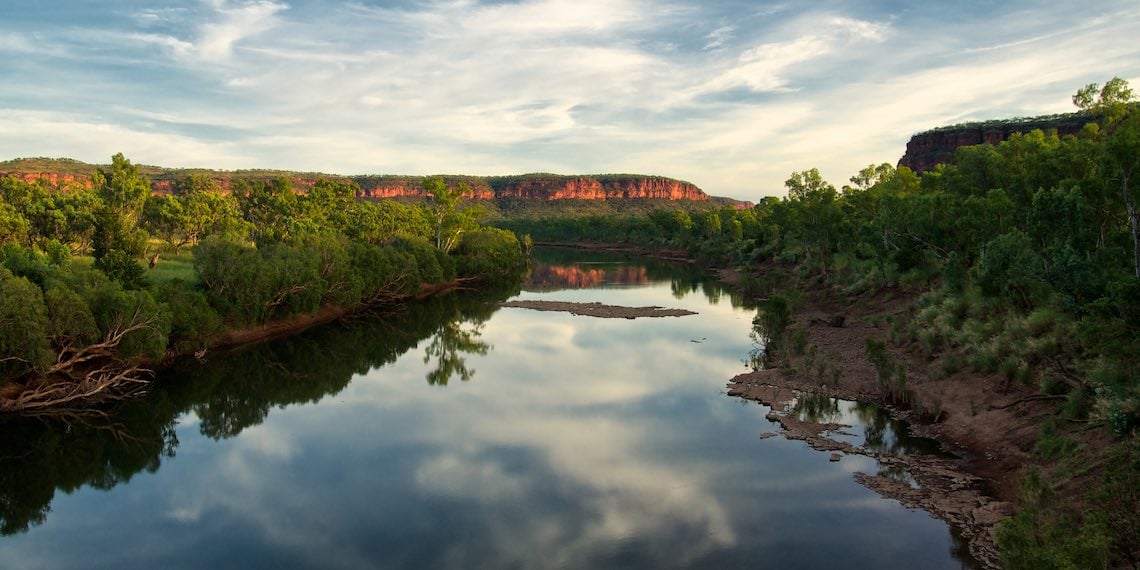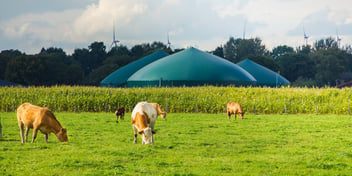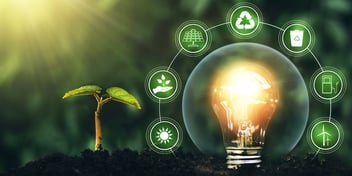How water shapes Australia’s carbon budget

Inland waters and coastal ecosystems are significant contributors to Australia’s overall carbon budget, in terms of sequestering, emitting and moving carbon. There’s still a way to go to understanding these carbon flows, according to CSIRO Chief Research Scientist Dr Pep Canadell, but work is underway.
Dr Canadell tackles some of our most pressing questions about water and the carbon budget – take a look at his insightful answers below.
Interested in learning more about water ecosystems under a changing climate? Ozwater’25 has a special stream dedicated to ecosystem values and health. Take a look at the program here.
Can you tell us about the relationship between water and the carbon cycle?
The carbon cycle and water cycle are intimately linked. This link is exemplified through a very unique pore on the leaves of plants, which are called stomata. Stomata need to open to take in carbon dioxide and make carbohydrates to grow. But as they open, the plant loses water. Plants have had to strike the ultimate balance between eating up CO2 and losing water, so they can maximise their growth.
This simple scientific fact describes the entire carbon-water cycle in Australia. As a semi-arid continent, we know water resources here are scarce and plants use water to grow. It’s fascinating to me that these tiny little pores on leaves are responsible for driving carbon sequestration across Australia.
There’s a big trade off. If you want more plants and vegetation cover for carbon sequestration, you’ll have less water for other uses. There will be less runoff, less water going into the rivers, and less water for agriculture or environmental conservation. There is no easy way of having both.
What potential do different water sources have in terms of providing carbon sequestration?
Starting with inland waters, we have rivers, reservoirs, lakes, ponds, dams and wetlands. This inland water continuum is connected to the land and right down to the coast – it’s all linked and carbon flows through it. And most of the inland waters are actually net sources of carbon – they are emitters of carbon dioxide and methane. Reservoirs can bury carbon and play a function of carbon sequestration, but, as a whole, we consider these inland waters as a source of carbon.
We could look for ways to get more carbon into inland water bodies, which, under proper conditions, could create a long-term impact. But it all depends on what you want that water body to do. And if its main purpose is water storage, then sinking organic matter into it to create a carbon sink might not be compatible. We are currently limited in terms of what we can do with carbon storage in inland waters.
On the flip side, over the past 10 years we have learned that coastal zones have a huge carbon stock. Marine ecosystems do take in a lot of carbon, quite intensively, when you compare them to some of the other ecosystems. Mangroves, seagrass meadows and kelp forests have become a really interesting place to look.
In addition, these coastal zones receive carbon from rivers and other inland waters, because they are part of a continuum starting from the land and ending in the open ocean, with freshwater bodies in the middle. There is a huge amount of interest in how these coastal ecosystems might become part of the larger portfolio of carbon mitigation.
Why is it important to understand the links between water and carbon? What will it help enable?
All of this carbon accounting work is part of Australia’s need to draw up a carbon budget. The carbon budget of Australia is everything to do with all the sources and sinks of carbon, both going into and being removed from the atmosphere, and all the reorganisation of carbon that takes place between freshwater systems, terrestrial and coastal ecosystems, and the oceans around Australia.
Ultimately, we need to know where the carbon goes, and the net balance of carbon from both anthropogenic activities and natural processes. These two streams are no longer independent, because we have altered nature through anthropogenic climate change. The streams are becoming increasingly blurred and we need to understand how they influence each other.
We want to know how much carbon is accumulating at the bottom of reservoirs, so we can consider if these storages can become part of the carbon budget. But freshwater systems also move carbon from one place to another, and we want to know the ultimate fate of all the carbon flowing through the system. This information will help us design strategies and innovations to help us sequester as much carbon as possible.
The Australian Government is responsible for the National Greenhouse Gas Inventory. From that national inventory, we develop policies to reach our commitments. By 2030, we have committed to 43% emissions decline from 2005 levels. By 2050, we have committed to achieve net zero emissions; that’s just around the corner.
Net zero emissions mean that if we have some emissions left by 2050, we will need to find ways to compensate by removing CO2 from the atmosphere. It will be very difficult to do.
Every aspect of carbon is going to become crucial. And so, all of the carbon activity in our freshwater systems becomes a very critical component. Land and waterway carbon will remain very important in the overall balance of the carbon budget on this continent.
Where is Australia at in terms of developing an effective approach to accounting for water-related carbon?
There is a consensus across multiple research organisations in Australia that we have a very limited amount of observation. Part of this is to do with the difficulties in measuring carbon flows.
If we go into a reservoir or a lake, we can quite easily measure methane diffusion at the site. However, measuring carbon emissions from ebullition, the sudden burst of methane bubbles, is difficult. How do we even begin to put a system in place to capture the amount of carbon released from bubbles? Australia has researchers trying to develop new methodologies to do it.
There are other challenges in doing this work in Australia. We have a lot of water bodies that are temporary and often remote to access. The top end is an example of that. For six months, it's a very active freshwater system within the overall carbon budget, but then everything dries out. We also have massive intermittent freshwater bodies, like Kati Thanda-Lake Eyre, which is only full every so many years. So, we have a lot of challenges in measuring these intermittent cycles.
But there is some innovative work going on looking at utilising field and remote sensing approaches, including satellite technology, to help. But first, we need the on-site measurements to know what is going on and to calibrate the remote sensing products. These developments are recent. We have systems and technological capabilities ready to go. But we acknowledge that this is a field that has been poorly studied to date, so setting up the research takes time.
What research is needed moving forward?
Some people thought that, on a dry continent like Australia, there was no need to be concerned about carbon budgeting. That’s when we thought huge carbon sequestration only occurred in places like the Amazon. But this has been a mistake. Australia’s carbon emissions and sequestration can be very large and incredibly variable, as they interact with a more unpredictable water cycle affected by climate change.
It’s a big challenge. Shifting the industrial sector from fossil fuels to renewables is very important, as a dominant source of emissions, but the land and freshwater ecosystems play both a role in emissions and carbon sequestration.
In late 2023, we published a comprehensive carbon budget for Australia. All the freshwater is included, but all the estimates had to come from overseas products and modeling because we didn’t have enough data available here. The research community in this field agrees that the next step is to improve these estimates with local field and remote sensing measurements. We need to be feeding our systems with real and local data.
Universities such as Charles Darwin and Southern Cross, along with CSIRO, are looking at a comprehensive assessment of what research is needed on carbon and inland waters across Australia, and its links to coastal ecosystems and oceans. We must know as much as possible about the flows of carbon throughout those systems to build an improved and complete carbon budget for Australia, which is what we are working towards now.
Interested in learning more about water ecosystems under a changing climate? Register for Ozwater’25 and join water professionals from around Australia to discuss water’s most pressing issues.



